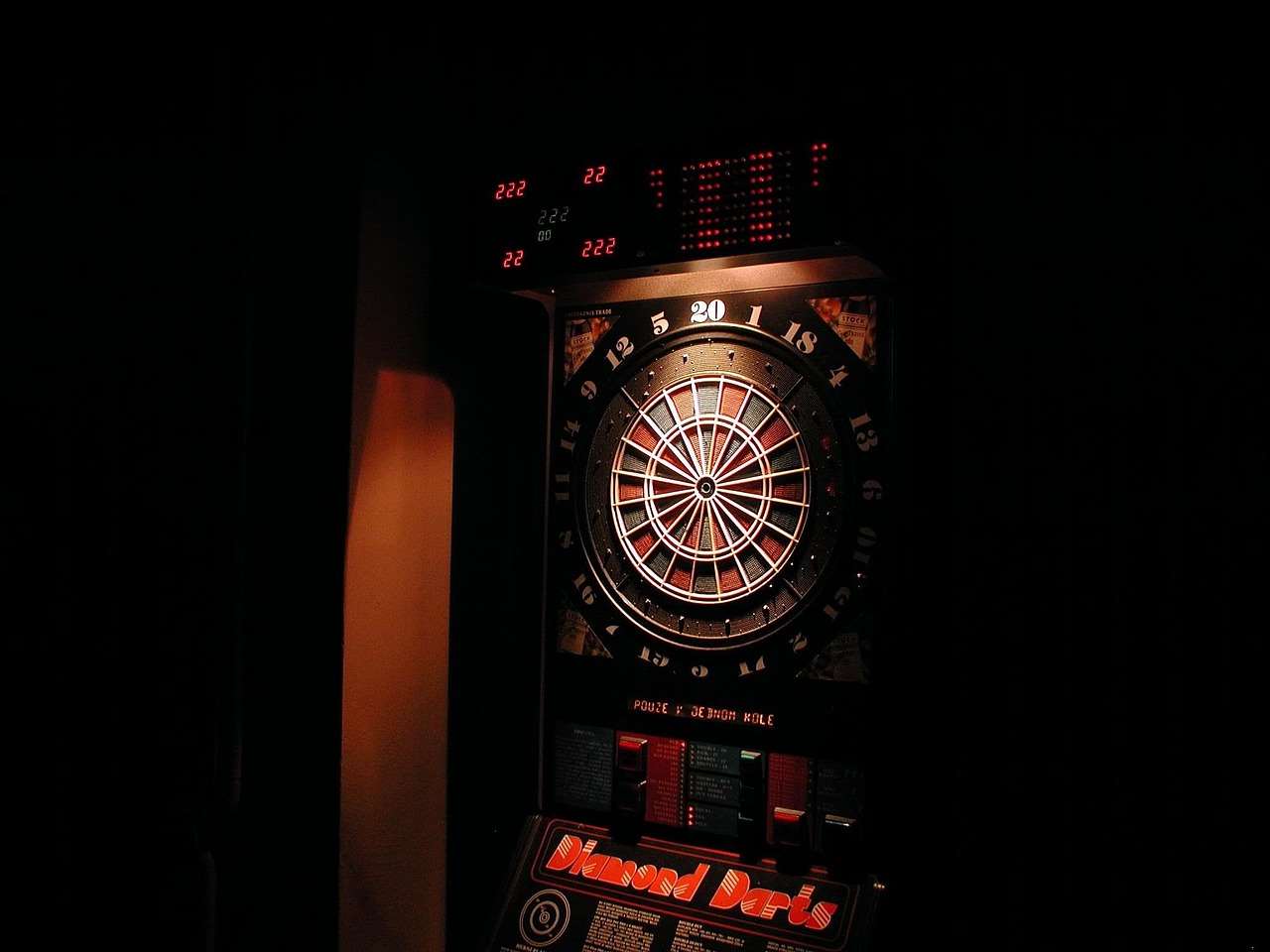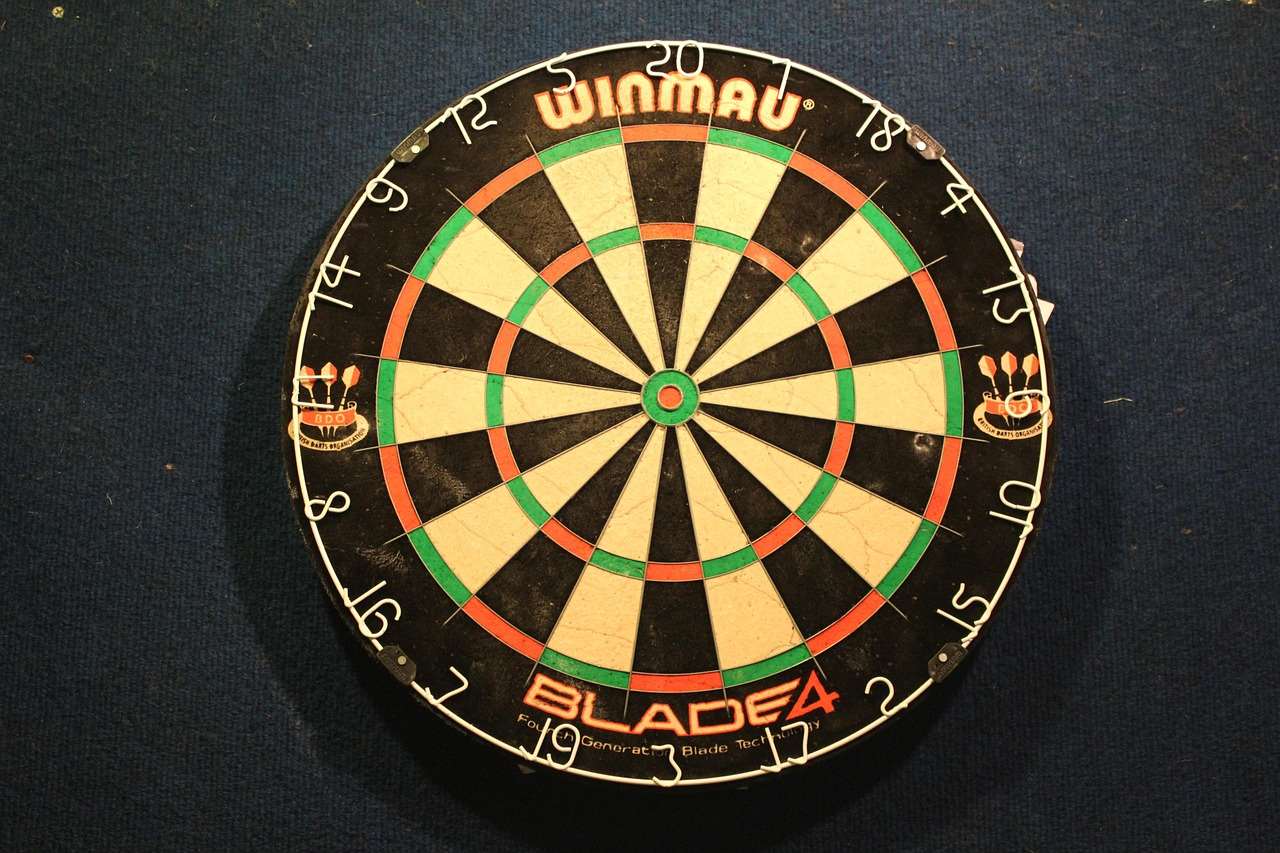The question of **darts who throws first** is settled by a simple coin toss or a ‘bull up’ – where each player throws one dart at the bullseye, and the closest gets the advantage. This article will delve into the specifics of these methods, explore their variations, and discuss their importance in fair play within the sport of darts, as well as related aspects of **dart scoring** and **dart strategy**.
⚠️ Still Using Pen & Paper (or a Chalkboard)?! ⚠️
Step into the future! The Dart Counter App handles all the scoring, suggests checkouts, and tracks your stats automatically. It's easier than you think!
Try the Smart Dart Counter App FREE!Ready for an upgrade? Click above!
Determining Darts Who Throws First: The Crucial Toss or Bull Up
In the captivating game of darts, deciding **darts who throws first** is a crucial initial step. It establishes the order of play and gives the leading player a slight psychological edge. There are typically two methods used to resolve this: the coin toss and the ‘bull up’ (also known as ‘diddle for the middle’).
The Simplicity of a Coin Toss
The coin toss is straightforward. One player calls ‘heads’ or ‘tails’ as the coin is flipped. The winner of the toss gets to choose whether they want to throw first or defer the decision to their opponent. This method is quick and easy, making it suitable for casual games or situations where time is limited. It provides a completely random decision, ensuring absolute fairness.
The Skill-Based ‘Bull Up’
The ‘bull up’ is the more common and arguably fairer method for deciding **darts who throws first**, particularly in competitive settings. Each player throws one dart at the bullseye. The player whose dart lands closest to the center of the bullseye gets to choose whether they want to throw first.
Here’s a detailed breakdown of the bull up process:
- Throwing Order: Players typically alternate throws, with a designated thrower going first.
- Dart Position: The closest dart to the bullseye determines the winner. If both darts land in the bullseye, the one closer to the center wins.
- Out of Bounds: If a dart lands outside the board, it’s usually counted as furthest away.
- Tiebreakers: If the darts are judged to be equidistant, players typically throw again, alternating throws until a clear winner is determined.
- Dart Removal: Crucially, darts are usually *not* removed from the board after the first throw. The second player must avoid hitting the first player’s dart.
The ‘bull up’ adds an element of skill to the process of deciding **darts who throws first**. It allows players to demonstrate their accuracy and control right from the start.

Variations and Clarifications on the ‘Bull Up’ Method
While the basic principle of the ‘bull up’ is consistent, some variations and clarifications are important to understand.
Darts on the Wire
What happens if a dart lands on the wire surrounding the bullseye? This is a common occurrence, and the rule is generally that the dart **does not count** and the player must throw again.
Darts Bouncing Out
If a dart bounces out of the board after hitting it, it is **not counted** unless it is deemed to have hit another dart in the board. In this case, the dart that was hit and moved from its position will be placed back to its nearest position.
Obstruction
Sometimes a player’s dart may obstruct the view of the bullseye for the other player. In such cases, the players may agree to a re-throw or use a marker to indicate the position of the obstructing dart.
For players interested in tracking scores, a Dart Counter App (https://dartcounterapp.com/) is a helpful tool. It can easily log scores and help determine winning averages.
The Advantage of Throwing First
In darts, the advantage of throwing first, often referred to as “having the throw,” is a subtle yet significant factor that can influence the outcome of a match. This advantage primarily stems from the ability to dictate the pace and pressure of the game, particularly in legs and matches that rely on a **double out** finish. The player who throws first has the opportunity to score heavily and put their opponent under immediate pressure to respond.
Having the throw is particularly valuable in close matches where players are evenly matched in skill. Being able to set up a finish first can create psychological pressure on the opponent, potentially leading to mistakes. Furthermore, the player with the throw can attempt to leave a specific number for the finish, forcing their opponent to play defensively or take risks to keep up. It also contributes to higher **9 dart finish chance**.

Fair Play and Sportsmanship
Regardless of the method used to determine **darts who throws first**, it is crucial to maintain fair play and good sportsmanship. This includes:
- Honesty: Accurately assessing the distance of darts from the bullseye.
- Respect: Avoiding any distractions or unsportsmanlike behavior.
- Integrity: Adhering to the agreed-upon rules and variations.
Remember that darts is a game of skill and strategy, but it’s also a game of respect. Maintaining a positive attitude and upholding the principles of fair play enhances the enjoyment for everyone involved. Have you considered **what is luke littler darts setup**?
Advanced Strategy and the Importance of the Throw
At a higher level of play, the strategic implications of who throws first become even more pronounced. Experienced players often develop specific strategies based on whether they have the throw or not. For example, if a player has the throw, they might aim for higher scores early in the leg to build a significant lead. If they don’t have the throw, they might focus on consistent scoring and capitalizing on any mistakes made by their opponent.
Understanding the nuances of the throw can also influence decision-making during the match. For example, if a player is in a close leg and has the throw, they might be more inclined to take a riskier shot to set up a finish. Conversely, if they don’t have the throw, they might play more conservatively and try to force their opponent into making a mistake. Understanding **dart double to 2 decimal places** can greatly improve your precision.
Moreover, the mental aspect of having the throw shouldn’t be underestimated. Knowing that you have the opportunity to dictate the pace and pressure of the game can boost confidence and improve performance. It’s all about using the throw to your advantage and maximizing your chances of winning.
Throwing Style Variations
There are many different throwing styles in darts. Some players have very deliberate motions, while others have more rapid releases. Some players stand square to the board while others have an angled stance. These variations can make a ‘bull up’ more exciting as it pits different styles against each other. Do you ever see **weird dart throws**?
The Classic Stance
The classic stance involves standing perpendicular to the oche (the throwing line) with one foot forward and the other back. The arm is extended towards the board, and the dart is released with a smooth, controlled motion. This style is often taught to beginners as it provides a stable and balanced base for throwing.
The Angled Stance
Some players prefer an angled stance, where they stand at a slight angle to the oche. This allows them to get a better view of the board and can also help with aiming. The arm motion is similar to the classic stance, but the player may need to adjust their grip or release point to compensate for the angle.
The Side-On Stance
In this stance, the player stands almost entirely sideways to the board. This stance allows the player to get their eye directly in line with the dartboard. This gives them a more precise view of where they’re aiming.

The Psychological Aspect of Darts
Darts is a mental game just as much as it is a physical one. The ability to remain calm and focused under pressure is crucial for success. Players often develop pre-game routines and mental strategies to help them stay in the zone. This includes managing anxiety and stress, visualizing successful throws, and maintaining a positive self-image. The importance of mental fortitude becomes even more evident if you search “**nine dart finish youtube**” and see the pressure some players are under!
Dealing with Pressure
Pressure is an inevitable part of darts, especially in competitive matches. Players need to develop strategies for managing this pressure, such as deep breathing exercises, positive self-talk, and focusing on the present moment. Visualizing success can also help to boost confidence and reduce anxiety.
Maintaining Focus
Staying focused throughout a match is essential for consistent performance. Distractions can come in many forms, from the noise of the crowd to the thoughts in your own head. Players need to learn how to block out these distractions and stay present in the moment. Techniques such as mindfulness and meditation can be helpful in improving focus and concentration.
Building Confidence
Confidence is a key ingredient for success in darts. Players need to believe in their ability to perform well, even when things aren’t going their way. This can be achieved through practice, positive self-talk, and focusing on past successes. Celebrating small victories and acknowledging progress can also help to build confidence over time.

Conclusion
Understanding the nuances of **darts who throws first** is more than just knowing the rules; it’s about understanding the subtle advantages, the strategic implications, and the psychological impact. Whether it’s a simple coin toss or a skill-based ‘bull up’, the process of deciding the initial order of play sets the stage for an engaging and competitive game. Embrace the spirit of fair play, hone your skills, and enjoy the thrill of the game!
Ready to elevate your darts game? Take what you’ve learned here and apply it to your next match. Consider joining a local darts league, practicing regularly, and continuing to learn about the sport. For your enjoyment, consider searching to find **are there any darts matches today**. Remember to always practice good sportsmanship and have fun!
Hi, I’m Dieter, and I created Dartcounter (Dartcounterapp.com). My motivation wasn’t being a darts expert – quite the opposite! When I first started playing, I loved the game but found keeping accurate scores and tracking stats difficult and distracting.
I figured I couldn’t be the only one struggling with this. So, I decided to build a solution: an easy-to-use application that everyone, no matter their experience level, could use to manage scoring effortlessly.
My goal for Dartcounter was simple: let the app handle the numbers – the scoring, the averages, the stats, even checkout suggestions – so players could focus purely on their throw and enjoying the game. It began as a way to solve my own beginner’s problem, and I’m thrilled it has grown into a helpful tool for the wider darts community.